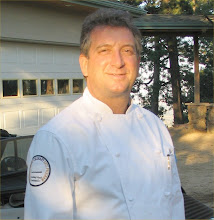A few weeks ago I bought a set of Teraforma Whisky Stones on Amazon.com. I really don't know why I bought them. It was dumb. I knew it was dumb. But I did it anyway. Sigh.
It is a cute idea to have whiskey literally "on the rocks", but in practice, frozen rocks simply can’t cool a drink the way ice can. The reason has to do with "enthalpy of fusion." [There is a useful discussion on Wikipedia for those that are interested.] Basically, it takes far more energy for a substance to change state (e.g. melt from a solid to a liquid, freeze from a liquid into a solid, or boil from a liquid to a gas) than it takes to change the temperature of a substance without changing its state.
Using Wikipedia's example, to raise the temperature of one kilogram (about 1 liter) of liquid water by 20°C, from 10°C to 30°C (50°F to 86°F) requires 83.6 kJ (kilojoules) of energy. However, to melt ice and raise the resulting water temperature by 20°C requires extra energy. To heat ice from 0°C to 20°C (32°F to 68°F) requires 333.55 kJ for 1kg of ice to melt, plus 83.6 kJ to bring the 1kg of water to go up 20°C. This is a total of 417.15 kJ of energy. [Thanks to the Wikipedia authors for this example.] So, since ice melts in a drink, it removes much more energy (heat) from the liquid than a comparable amount of a substance that does not melt (in this case, rock.)
These Whiskey Stones are made from soapstone, which does have an advantage for the application. It turns out that soapstone has a fairly high “thermal conductivity (k).” The thermal conductivity of soapstone is about 6 or 7, while that of ice is 2.18 (the higher the value the better the material is at conducting heat.) Soapstone’s thermal conductivity value of about 7 is nothing in comparison to a material like copper, which has a thermal conductivity of 398 and is renowned for its ability to transfer heat. Still, soapstone is significantly better than ice at transferring heat, so soapstone should take heat from the beverage more rapidly than ice does.
However, this ignores an important factor in your glass; as ice warms, it melts, so fresh ice is continually exposed to the beverage. The soapstone does not melt, so once the outside of the cube has warmed, heat must travel through more and more material to reach the remaining cold at the core. As a result, the stones rapidly cool the drink by a few degrees, but then the cooling effect slows. This mitigates the slight advantage soapstone has in thermal conductivity. Even if this weren't the case, the lack of state change from solid to liquid would make the stones less effective than plain old ice.
Soapstone also fails vs. ice in regard to thermal capacity (the energy required to raise or lower the temperature of a material.) Ice has a thermal capacity of about 2.11J/g, where the thermal capacity of soapstone is only about 0.8J/g (depending on the exact makeup of the stone.) Thus, it takes less energy to warm (or cool) a quantity of soapstone than a unit of ice, so soapstone has less capacity for cooling a beverage than ice does.
In a real world case, I put the stones in the freezer for 24 hours. I then placed three of them (weighing 77 grams) in a heavy crystal glass with a shot of whisky at 72 degrees. The drink quickly decreased in temperature to 60°F. There the temperature decrease stopped. To my taste 60°F is still too warm. By contrast, 77 grams of ice (rather a lot – ice is much lighter than soapstone) brought a fresh 72 degree shot of whisky down to 40°F in the same time period.
Granted, some times you don't want melting ice diluting your drink. In that case, there are dozens of solutions that have been in use since alcohol was invented: pour the drink over ice in a mixing container, then into your glass; put the bottle in the fridge or freezer; put your glass in the fridge or freezer; and on, and on.
So, why did I buy them? I was taken in by the con. I wasn't thinking. I thought it was a "cute" idea. Doh!
So, why did I buy them? I was taken in by the con. I wasn't thinking. I thought it was a "cute" idea. Doh!

















I think a lot of people don't really understand the purpose of whiskey stones. They are not meant to chill more than just a few degrees. They are meant to bring the temperature down to room temp or slightly lower. The reason being is that you lose flavor when whiskey is over chilled and you of course lose flavor from water. I love my Jongo whiskey stones set.
ReplyDelete